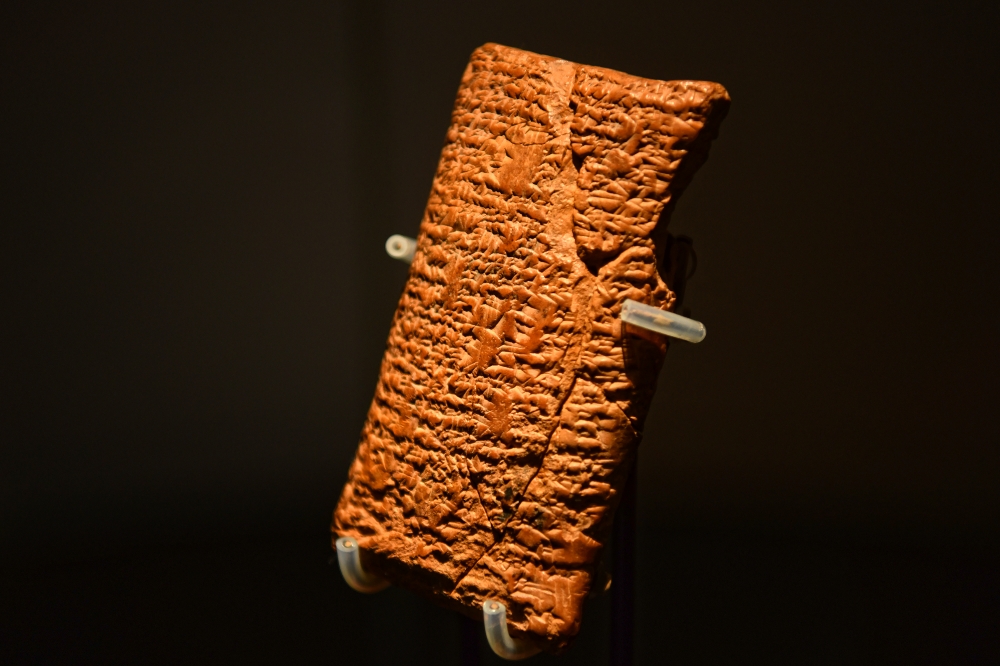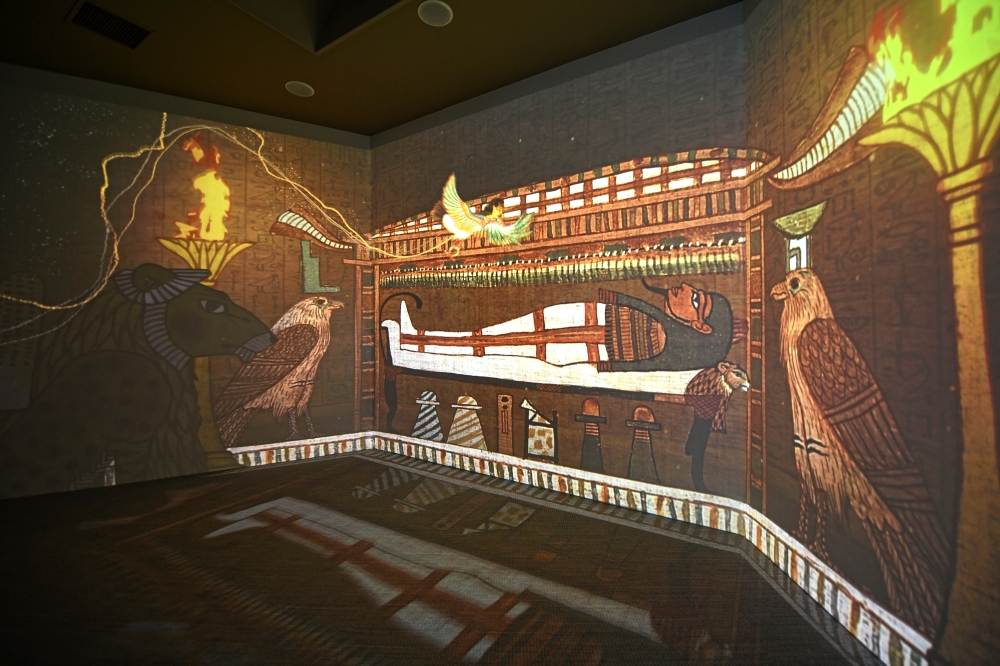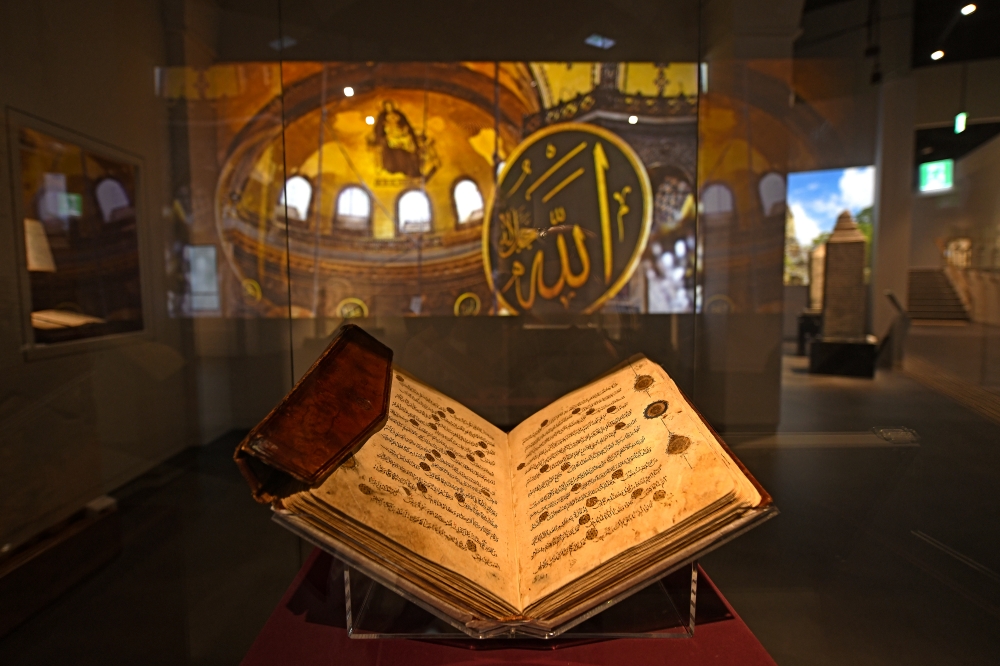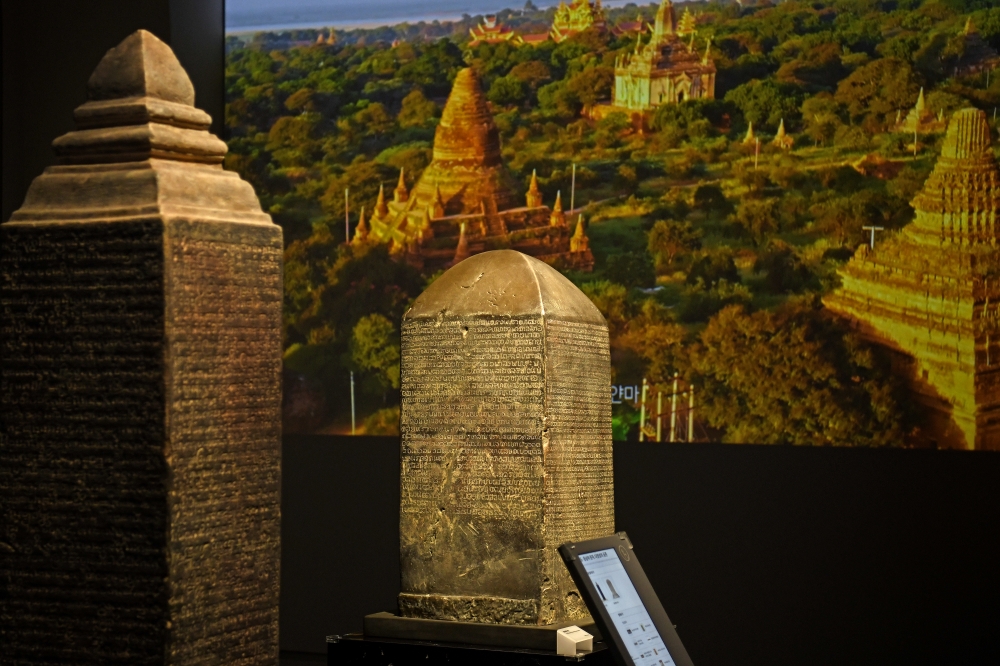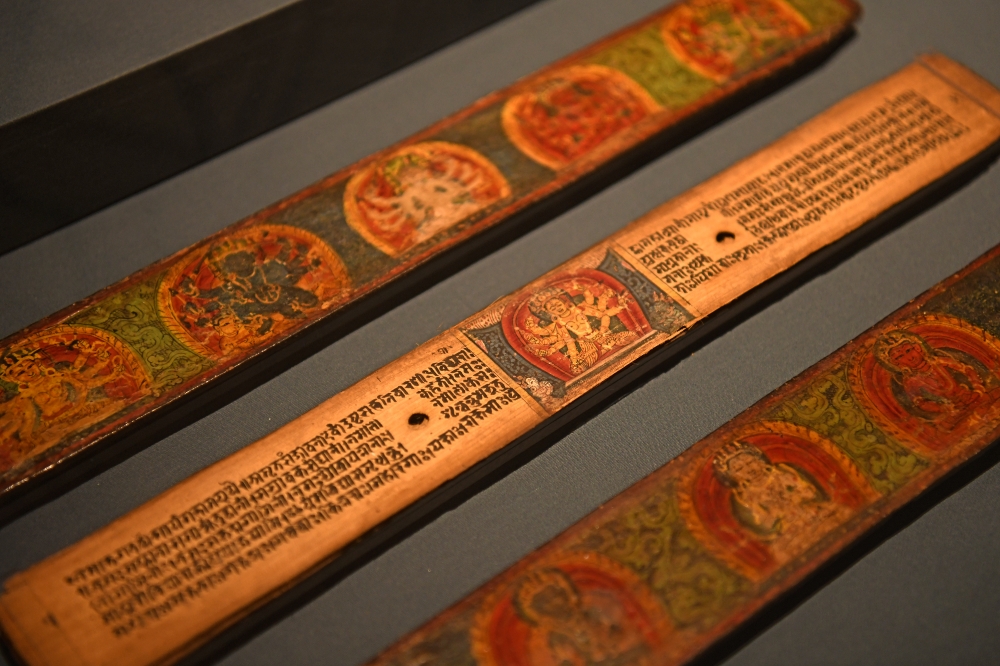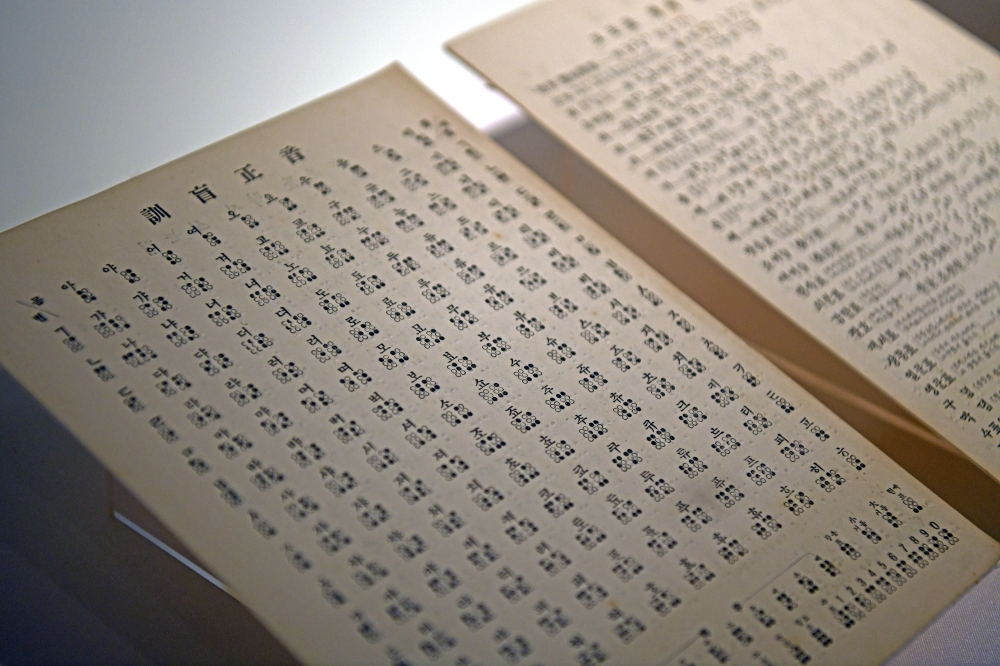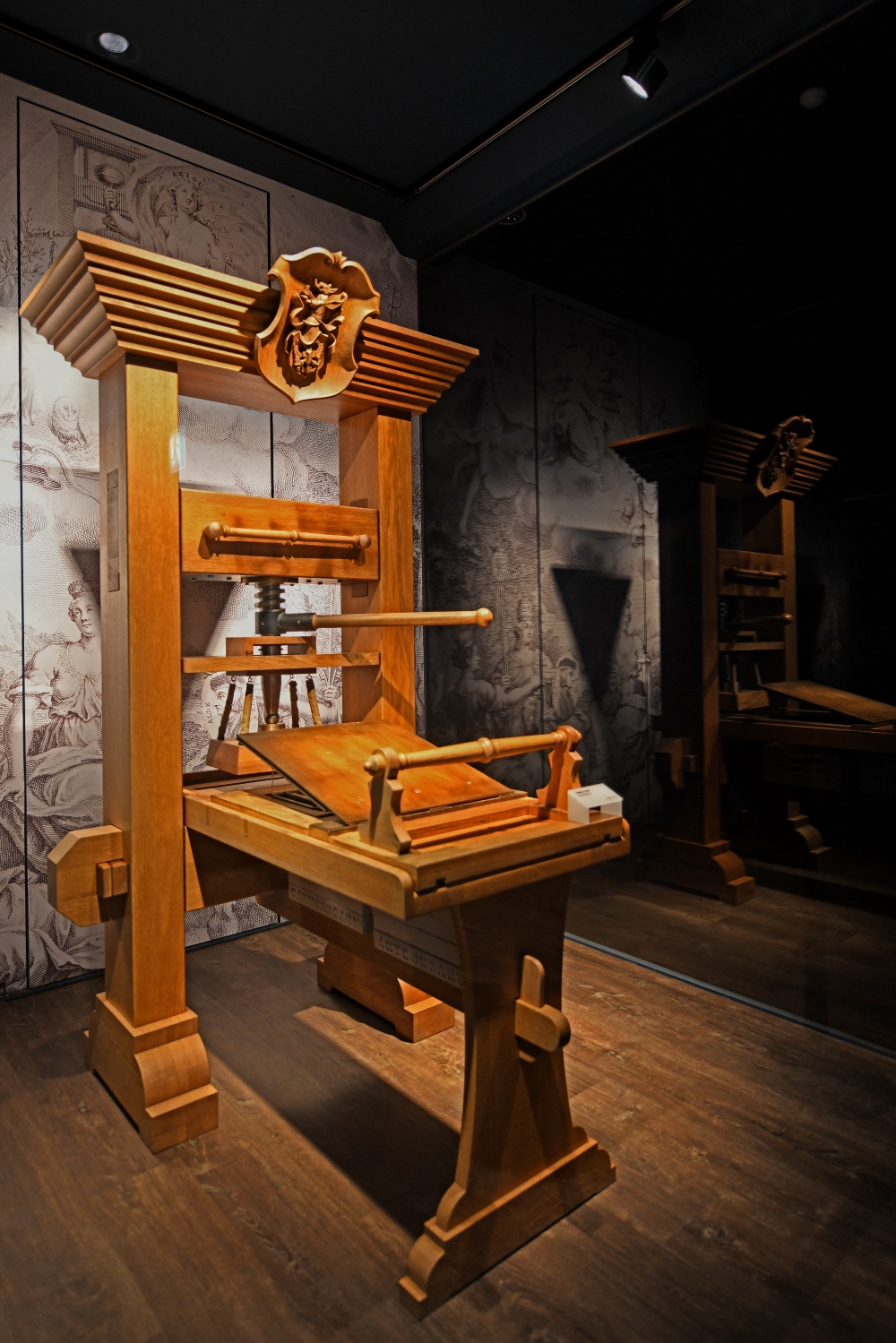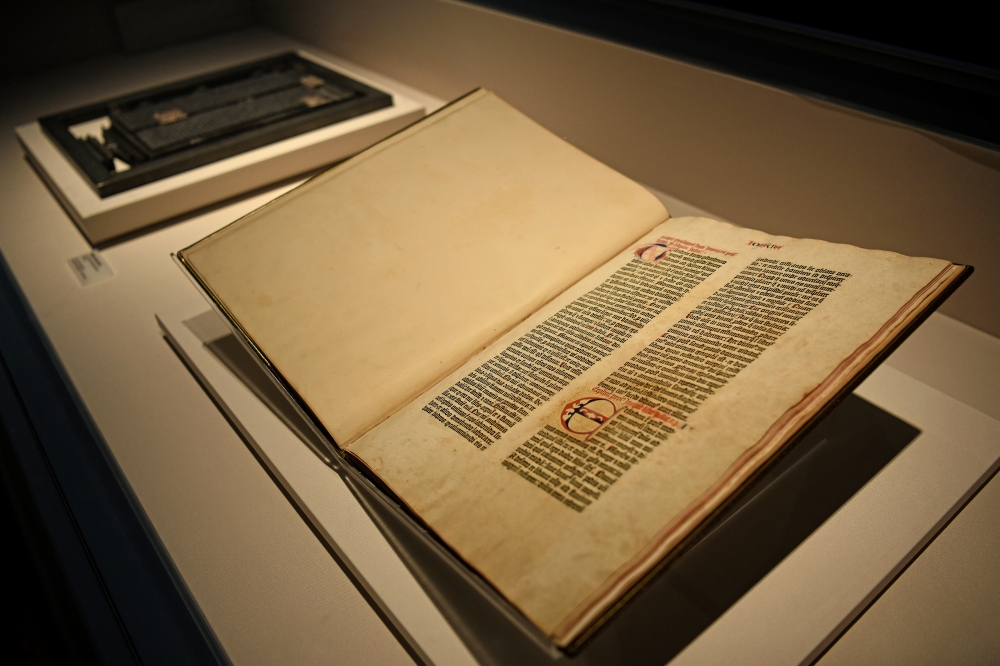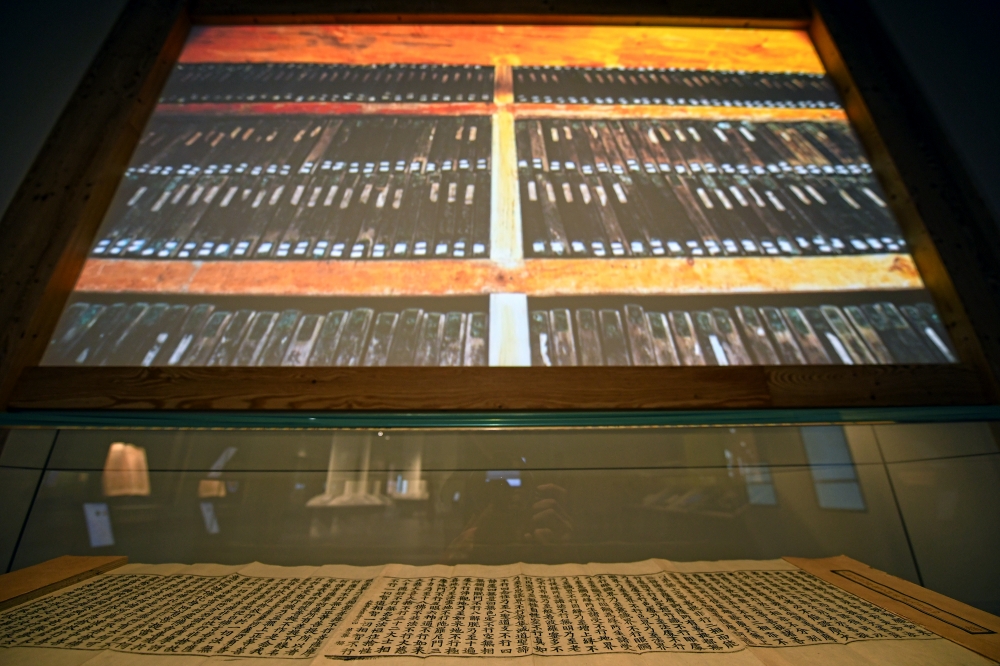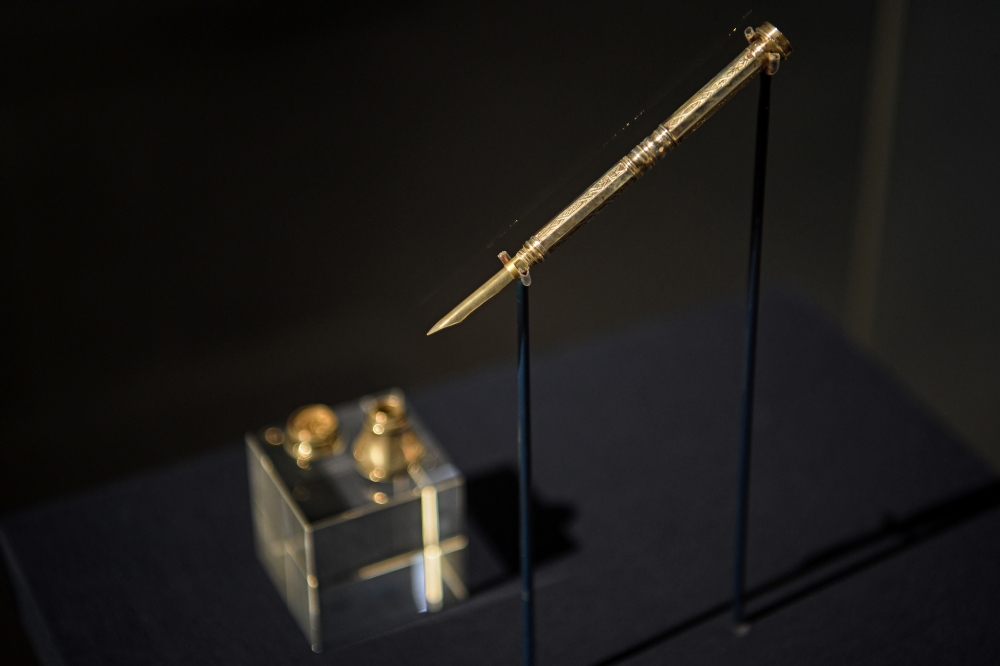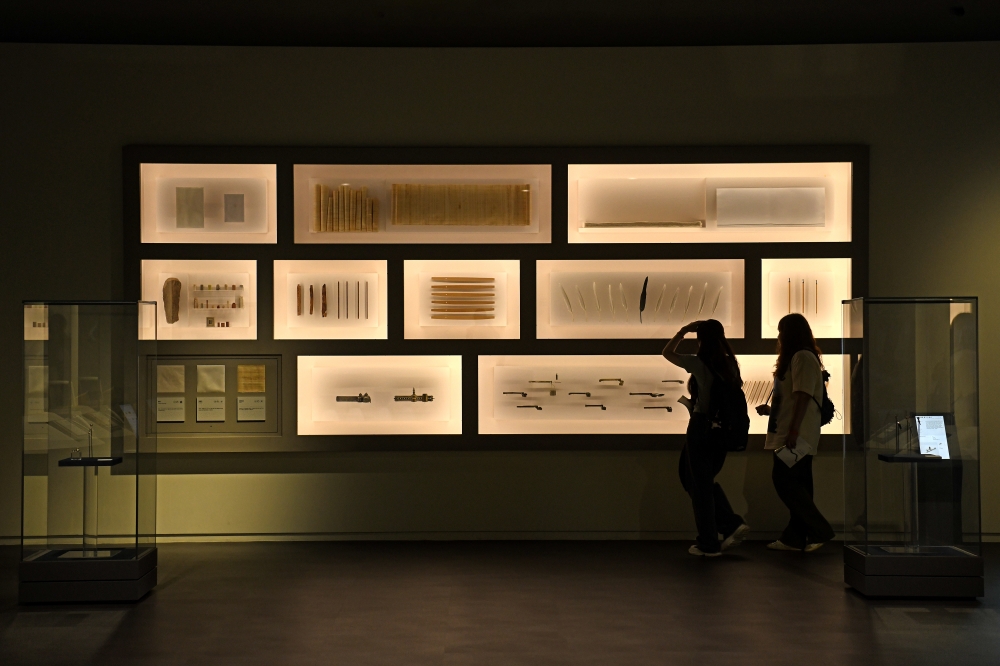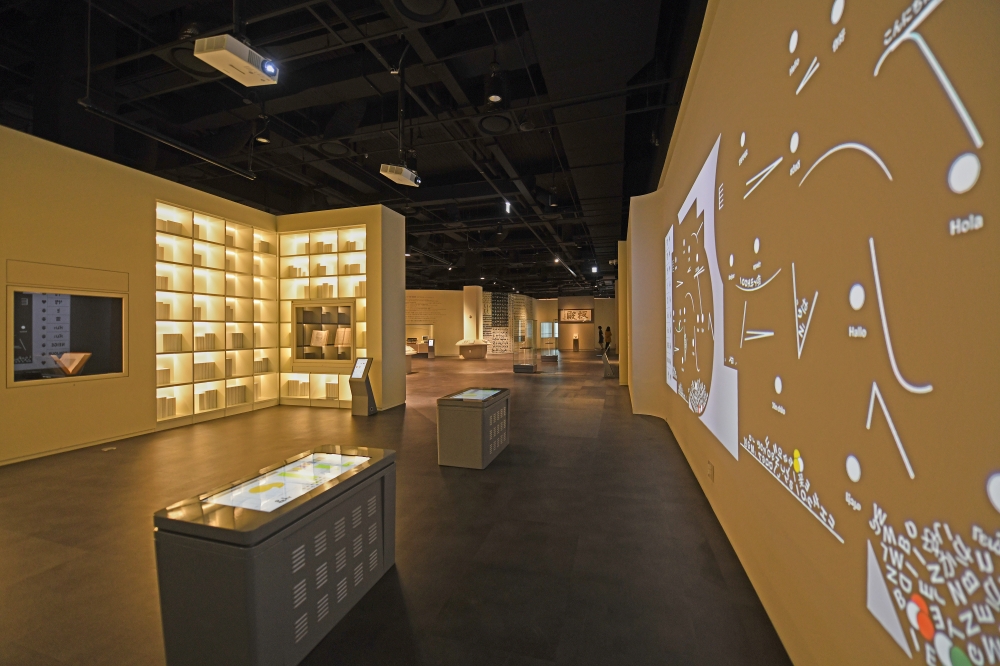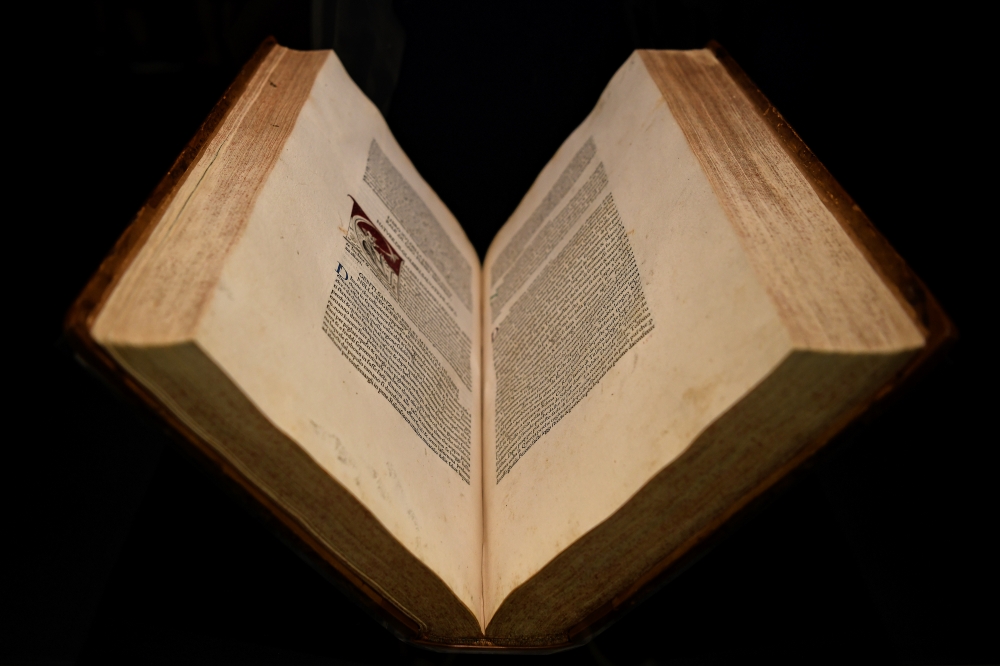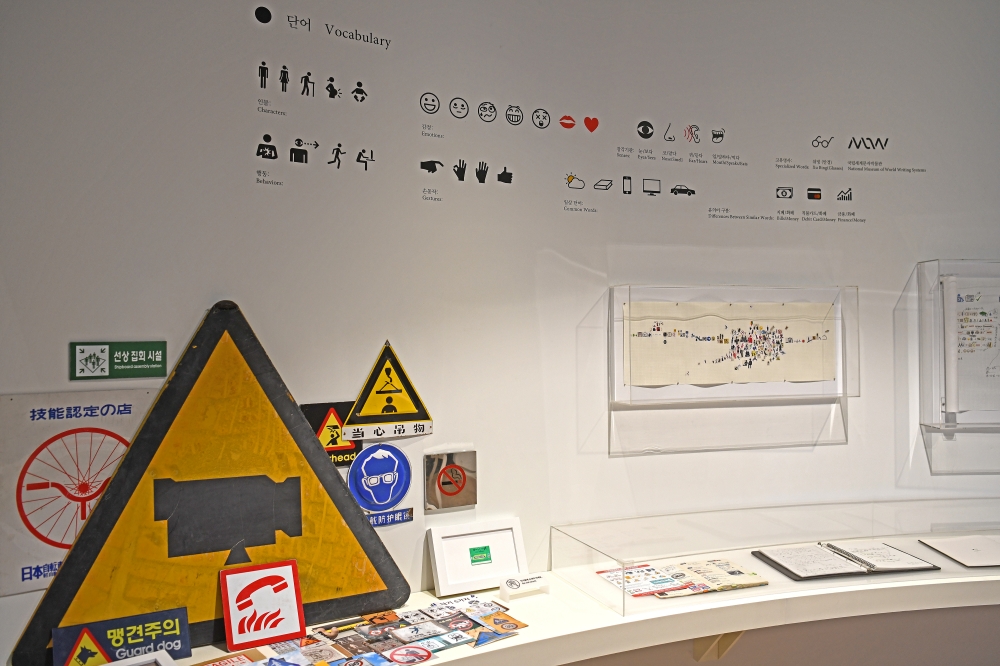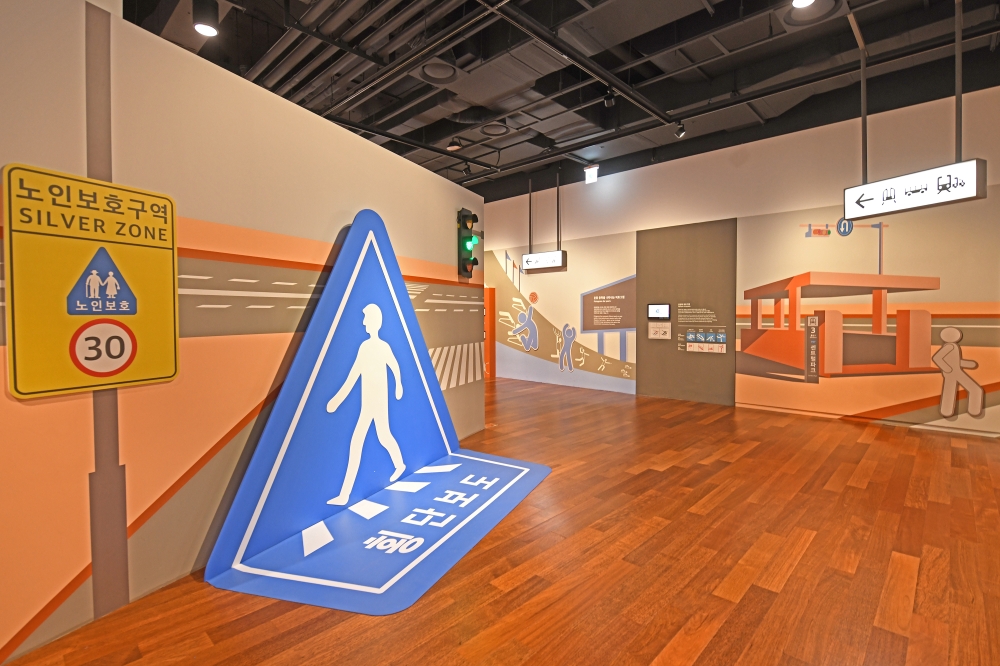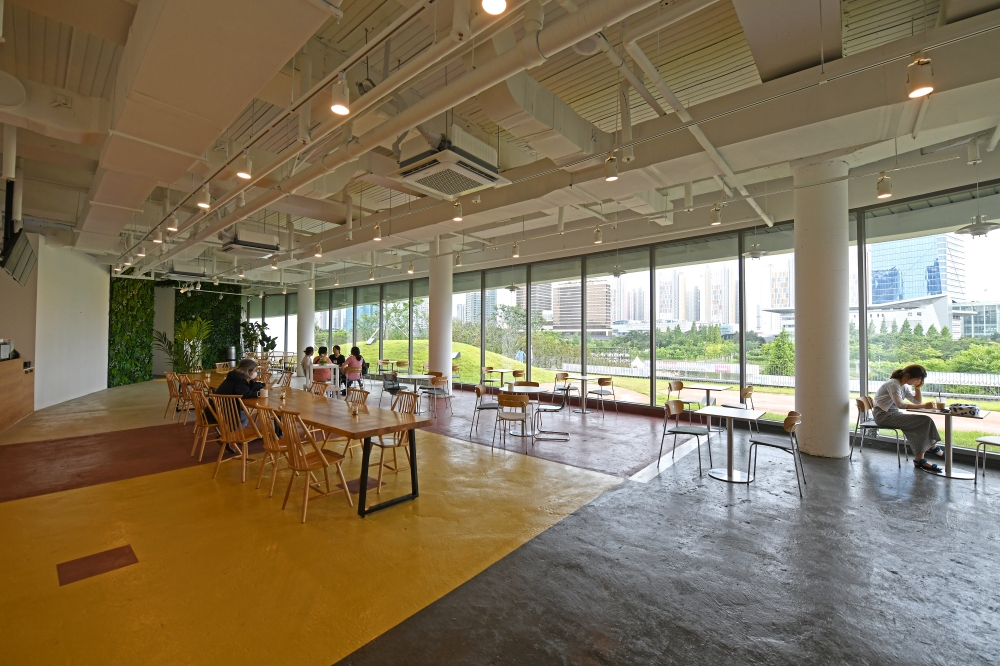Writing systems, humanity’s great invention
#NationalMuseumofWorldWritingSystems #PAGES #WritingSystems #Cuneiform #Gutenberg
Language is recorded in writing.
Writing becomes history, and history forms the basis of human civilization.
That’s how humanity grew and progressed.
As such, writing is humanity’s greatest invention.
A visit to the National Museum of World Writing Systems begins at the permanent exhibition hall in the basement.
The massive sculpture standing in front of the entrance to the exhibition hall is the sculpture Babel by artist Kim Seung-Young.
Writing allowed us to overcome the limitations of language, and what better way to signal the great meeting than this towering work?
The permanent exhibition is divided into two parts. The first part, “Writing Systems to Build Roads,” introduces the best-known writing systems used by humanity through various artifacts.
The exhibition includes cuneiform characters carved with reeds into earthen tablets and Egyptian hieroglyphs inscribed onto Canopic jars, which were used to store organs during the mummification process.
The Quran in Arabic script and the Dresden Codex in Mayan characters are also notable parts of the exhibition.
Hangeul, the world’s only writing system with clear documentation of its purpose and principles, is also a part of the exhibition.
Don’t miss the exhibition on “Hunmaengjeongeum.”
Hunmaengjeongeum is the first Braille alphabet for the Korean language, created in 1926 by Park Du-seong, who was born in Ganghwa, Incheon.
Indeed, one can find tactile and voice descriptions for visually impaired visitors across the permanent exhibition hall.
The second part of the exhibition, “Writing Systems to Create Culture,” introduces the power inherent in writing systems.
Writing systems gain power through communication.
Humanity’s communication evolved through the popularization of writing systems based on the printing press.
The Gutenberg Bible’s Book of Joshua is one of the most valuable artifacts in the National Museum of World Writing Systems and a part of the Bible printed by the first metal movable-type printing press in Europe, invented by Gutenberg.
Different cultures communicated through translation.
Translated works of religious scripture, in particular, spread to surrounding areas like wildfire, enabled by great translators like Kumārajīva, who translated Buddhist scriptures from Sanskrit into Chinese, and Martin Luther, who translated the Latin Bible into German.
Another interesting space is dedicated to different types of media used for recording.
Media here refers to objects or methods used to record writing, including mud, stone, metal, bone, plant matter, wood, and leather.
The most beloved medium, however, is the paper.
One can find an exhibition dedicated to writing instruments called “narayam” and “penner” in front of the exhibition dedicated to writing media.
Narayam is a stylus used in the southern part of the Indian subcontinent and Sri Lanka in the 18th and 19th Centuries.
It is a tool used to inscribe writing onto palm tree leaves. The inscriptions are then filled with ink made from soot.
Penner is a portable writing instrument that combines a pen nib and ink bottle.
One interesting part of the exhibition is bowls inscribed with Arabic script, the Oryunhaengsildo (Illustrated Guide to the Five Relations), and other writings that double as works of art.
The end of the permanent exhibition is graced by the Chinese artist Xu Bing’s work Di Shu, which shows the historical paradox of humanity emerging from painting to writing, then returning to painting.
To get the most out of the permanent exhibition, one can opt to join a guided tour of the exhibition.
These tours are led by docents who share fun stories associated with writing systems and are offered four times during weekdays (10:30, 14:00, 15:00, and 16:00) and three times during weekends (10:30, 14:00, and 16:00). The duration of the tour is 60 minutes per tour.
The first floor of the National Museum of World Writing Systems comprises the special exhibition hall, children’s gallery, and museum shop.
The special exhibition hall currently hosts “Too Long, Didn’t Read: What Is the Future of Writing Systems?”
This exhibition commemorates the museum's opening and will be hosted until November 19.
Entry is free of charge. The children’s gallery uses video technology and playing facilities to help children learn about writing systems in a more accessible manner.
The number of visitors is limited to 30 per session to ensure a pleasant experience for children.
Online reservation is required in advance. It is open from 10:00 to 16:40, and entry is free of charge.
The second floor houses the outdoor exhibition.
This structure, dominated by green grass and white curved walls, is PAGES, the symbolic structure of the museum.
The structure is inspired by a scroll, and sculptures themed after resonance are hidden throughout it.
One can also enjoy a fragrant cup of coffee at the cafeteria, viewing the outdoor exhibition through its front window.
- Address 217, Central-ro, Yeonsu-gu, Incheon
- Tel. No. +82-32-290-2000
- Opening Hours 10:00–17:00 (entrance every hour, 150 visitors per entry), closed on Mondays, January 1, Lunar New Year’s Day, and Chuseok
- Fees Free of charge
- Web Page www.mow.or.kr/kor/index.do
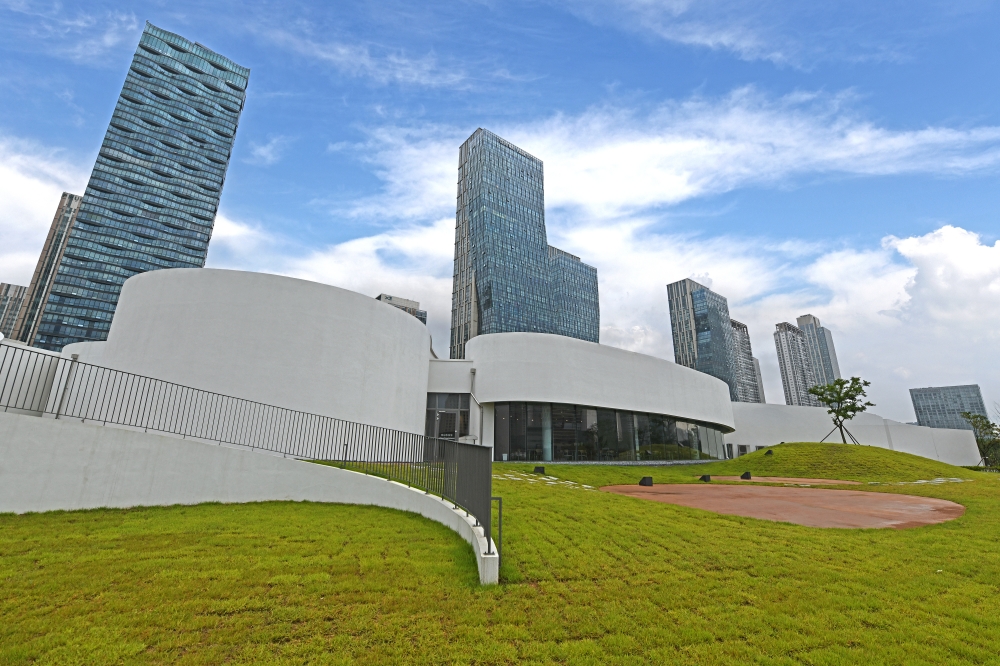
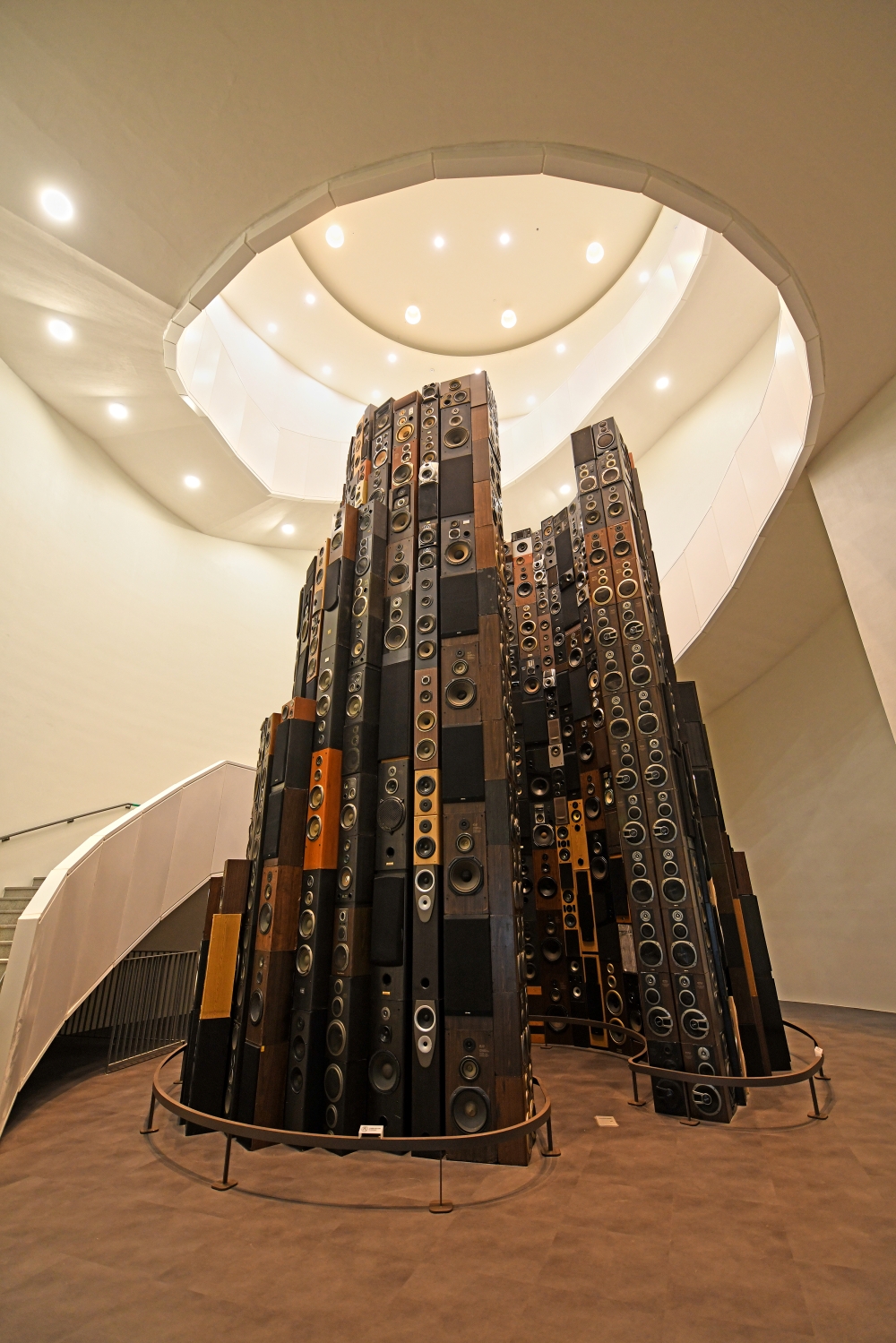



 3492
3492


